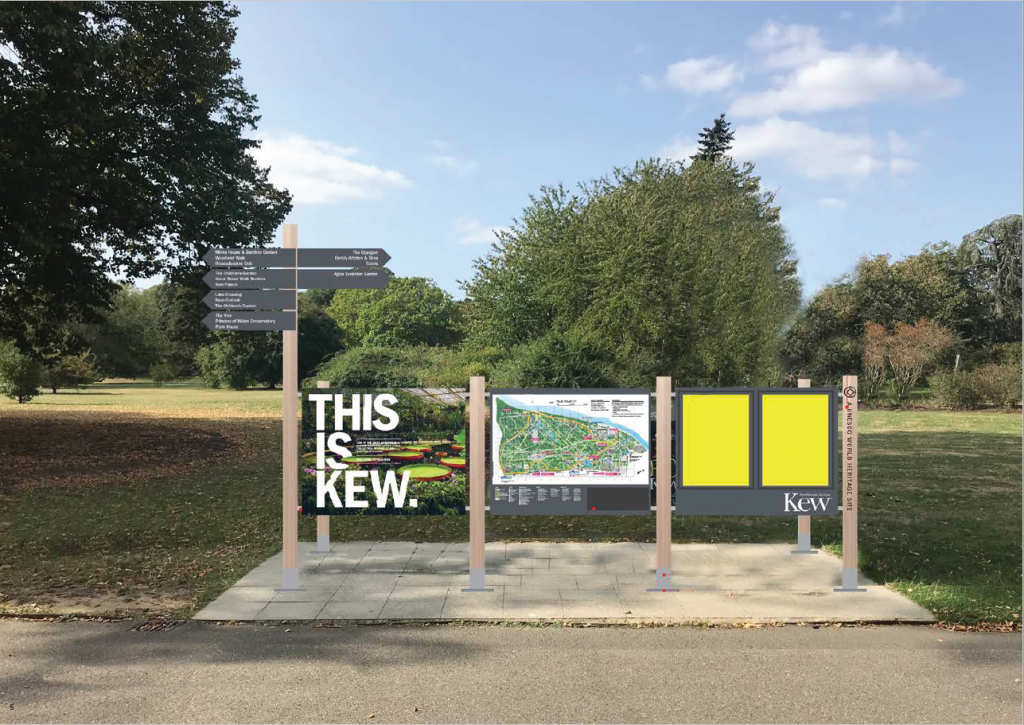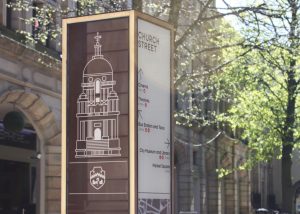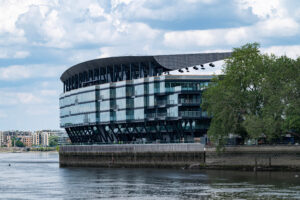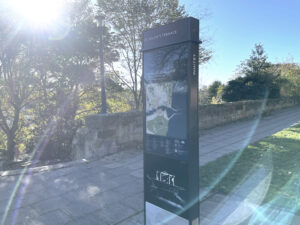Over 20 years of experience have taught us that before we put pen to paper (or indeed, cursor to InDesign) on any new wayfinding strategy, we must make sure we understand the context within which we’re designing.
If we’re to deliver on our promise to keep user experience at the heart of what we do, we have to first take into account a number of practical considerations that define the local context for each unique project.
In this blog post, we’ll go through some of the practical considerations that we need to be aware of when creating a wayfinding strategy for a town centre or university campus.
Understanding consent requirements
One of the first things to consider is whether the signage requires obtaining consents from the local authority. This could either be in the form of planning permission, advertisement consent or even listed building consent, if it is to be attached to a listed building.
Knowing whether consent is needed will inevitably influence the size and materials used in a design concept because certain policies and guidelines will need to be met to secure permission.
We work, manufacturer and local planning authority to determine and advise the client whether a signage scheme will require some form of consent. If it does, we’ll factor it into our design concept evolution and ultimately will prepare the requisite plans for the submission.
Understanding a place’s setting
Many town centres encapsulate a wealth of history, and understanding a place’s setting is intertwined with understanding a place’s history.
Indeed, for us, its story is what inspires our wayfinding concepts, and through research and working with local historians we aim to bring stories of the past to life on our interpretation boards.
We ask: is this place within a conservation area or are there listed buildings nearby? Whether or not particular consents will be needed, setting must be taken into account in our design process so the end result will preserve the place’s historic setting.
Or course, some places have a very different character and setting, such as a modern university campus, and our concepts must respond appropriately to each unique context. We do find, though, that whether a place’s history is long or short, new or old, the process of understanding its story is equally vital to creating a scheme with substance and depth.
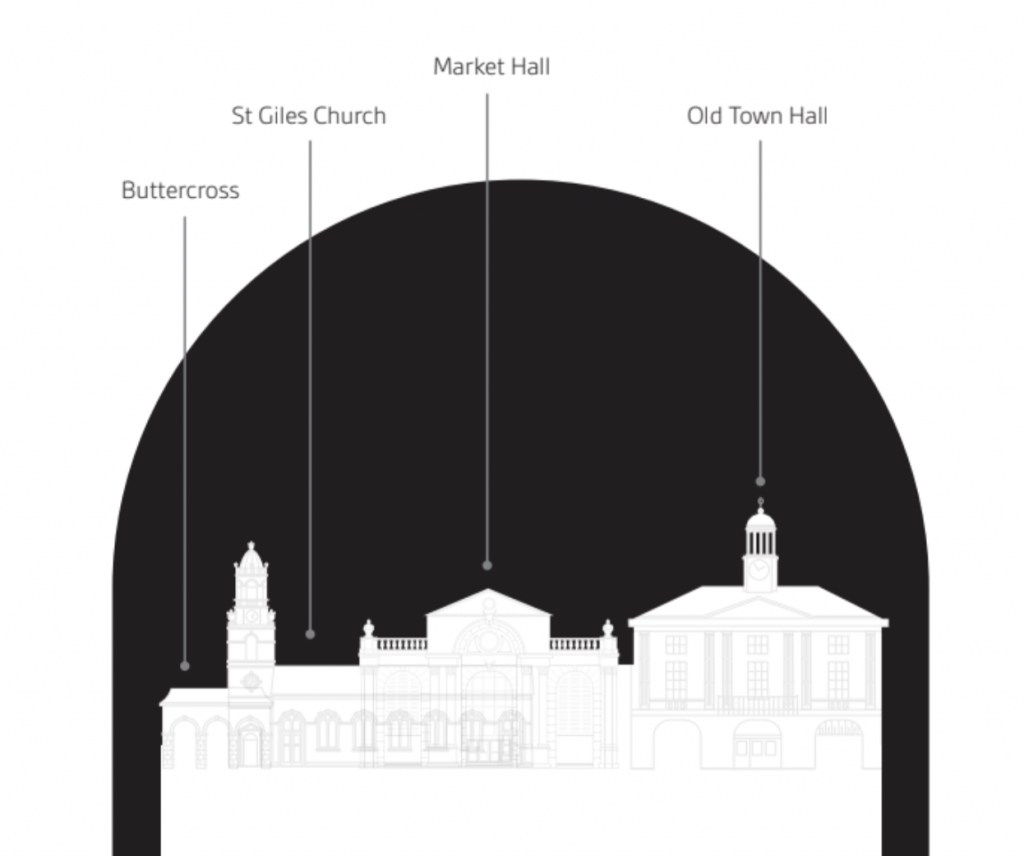
Understanding how people move through a space
Understanding the flow of people that move through a place, and why they are there, is another important factor to consider. Movement through a space often depends on the type of visitor: for example, historic town centres may welcome a significant number of visitors and tourists while university campuses may have high volumes of students and staff regularly moving between buildings. Of course, universities also have visitors, whether prospective students spending time there to get the feel of a place or delivery drivers looking for the quickest exit. The picture of who is using a space is rarely simple, and knowing the behaviours and patterns of people within the environment is key. That’s why we always carry out site visits early on in the process to understand how people move through a place.
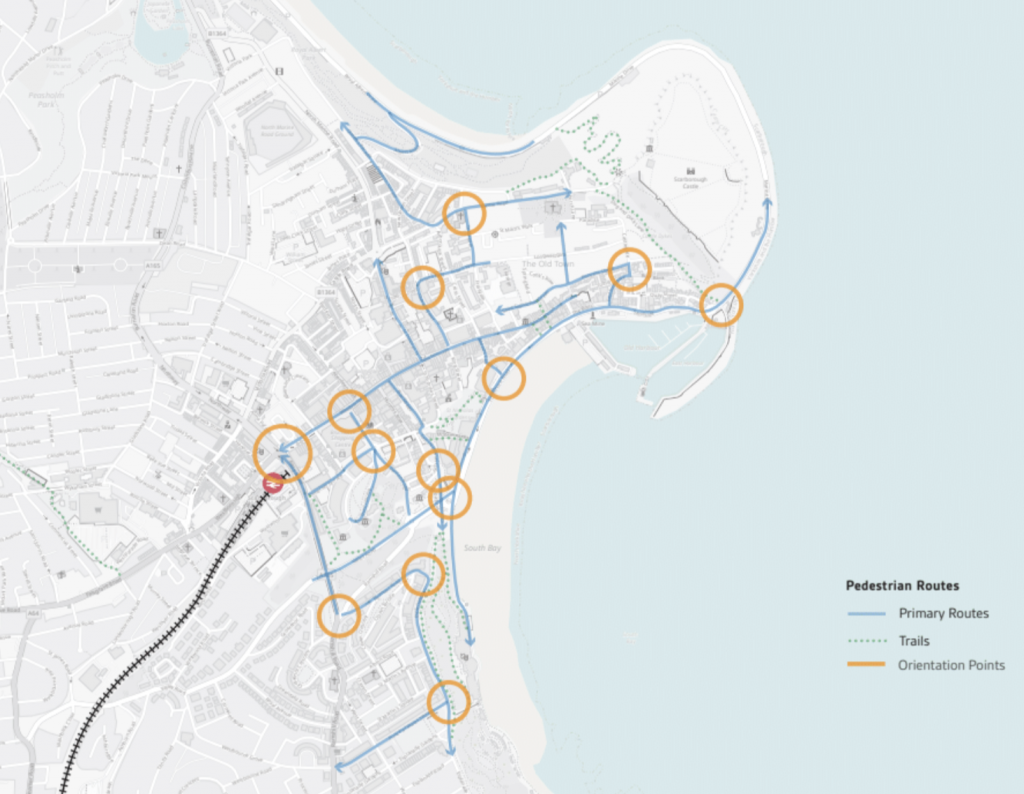
Understanding the users’ needs
To deliver a successful wayfinding strategy, we must also understand the users’ needs.
What information must we include on any given sign, and where should it be positioned to be most helpful to users?
Signage might be needed to direct visitors to particular buildings and facilities, to identify different departments or to provide information about directions, opening hours and services available. Indeed, it may be needed to meet all these needs.
Understanding the specific needs of users is critical in ensuring that the new signage meets the unique requirements of a particular place.
Our initial site visits also highlight desire lines across a space. An heavily-trodden grassed area where pedestrians have cut a corner reveals where the public realm is at odds with where people really want to go. It’s this sort of invaluable information that helps us to determine what information needs to be incorporated onto a sign and where to position it.
We must understand the full picture
At Placemarque, we take great care to make sure we fully understand the local context in which the signage is to be installed.
By taking into account what permissions are required, a place’s setting, people movement and user’s needs, we can create effective and efficient wayfinding strategies.
With our experience and expertise, Placemarque is the perfect partner to help you create exceptional signage that enhances the user experience of your place, while meeting all the necessary practical considerations.
Contact us today to find out how we can help create the best user experience in your place, by delivering a wayfinding strategy that really works. We’ll help you get it right first time.

